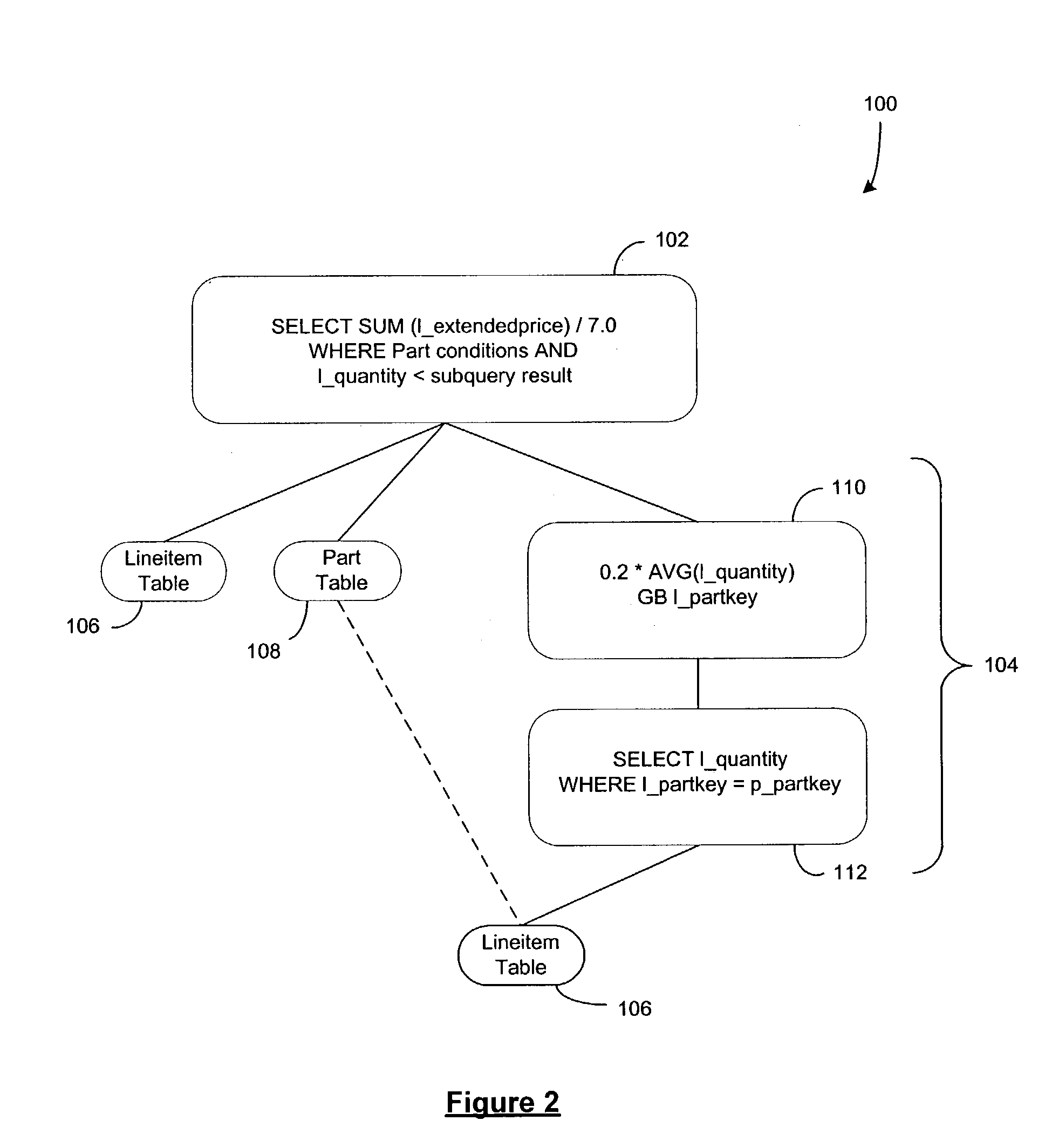System and method for transforming queries using window aggregation
a query and window aggregation technology, applied in the field of query processing in the relational database management system, can solve the problems of poor processing speed, complex queries that are often encountered, and significant network traffi
- Summary
- Abstract
- Description
- Claims
- Application Information
AI Technical Summary
Benefits of technology
Problems solved by technology
Method used
Image
Examples
Embodiment Construction
[0034]The following definitions and explanations provide background information pertaining to the technical field of the present invention, and are intended to facilitate the understanding of the present invention without limiting its scope:
[0035]DML: Data Manipulation Language, a set of statements used to store, retrieve, modify, and erase data from a database. There are two types of DML: procedural, in which the user specifies what data is needed and how to get it; and nonprocedural, in which the user specifies only what data is needed.
[0036]SQL: Structured Query Language, a standardized query language for requesting information from a database.
[0037]Xquery: XML QUERY Language. A language for querying XML documents from the W3C. Compatible with related W3C standards (XML Schema, XSLT, etc.), XQuery was derived from the XPath language and uses the same syntax for path expressions. Based on the XQuery data model, XQuery processes the query by parsing the XML document, the schema and...
PUM
 Login to View More
Login to View More Abstract
Description
Claims
Application Information
 Login to View More
Login to View More - R&D
- Intellectual Property
- Life Sciences
- Materials
- Tech Scout
- Unparalleled Data Quality
- Higher Quality Content
- 60% Fewer Hallucinations
Browse by: Latest US Patents, China's latest patents, Technical Efficacy Thesaurus, Application Domain, Technology Topic, Popular Technical Reports.
© 2025 PatSnap. All rights reserved.Legal|Privacy policy|Modern Slavery Act Transparency Statement|Sitemap|About US| Contact US: help@patsnap.com



